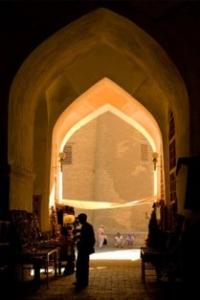You are here
Ancient Bukhara.

Bus cultural tours in Uzbekistan.
“A lot of water flowed, but a lot of land she brought with her to Bitik and Farab so that the other waters dried out completely; the place where Bukhara is located was covered with land, and the area was compared. Thus, the great river Sogd was formed, and Bukhara arose in the area covered by silt; people began to gather there from all sides, and the place took on a cheerful look”
Muhammad Narshahi "History of Bukhara".
Historical and cultural monuments of Bukhara.
In pre-Islamic times, the lower reaches of the Zeravshan River constituted the northwestern range of the Sogdian culture. The agricultural oasis located there was called Bukhara (possibly from the Sogdian Bukharak - “happy place”).
The first urban settlements of Bukhara date back to the middle of the 1st millennium BC, and the first Bukhara coinage was dated to the 2nd century BC. After the decline of the III-IV centuries. Bukhara's urban life experienced a new rise from the middle of the Vth century, due to the flourishing of trade on the Great Silk Road. T
he Ephtalits who conquered the Bukhara lands (Vth - VIIth centuries), and then the Turks (VIth VIIth centuries) patronized the trade of the Bukharians, limiting themselves to collecting taxes. According to the historian of the tenth century. Abu Bakr al-Narshahi, a city that later received the name of Bukhara, was originally called Numichet. Its foundation was the ancient citadel of Ark, built at the turn of AD. on an artificial hill with an area of 9.2 hectares.
In the Arch there was a palace and office of the ruler, a guard building, a temple of "idolaters". According to the legends, Ark was built by the epic hero Siyavush. Bukharians honored his grave at the eastern gate and annually on the days of Navruz there they sacrificed roosters.
Enlightener:
VG Saakov "History of Bukhara". Shark Publishing House, 1996. “Bukhara. Masterpieces of Central Asia. Historical guide to Bukhara. year 2012
Photos by
Alexander Petrov.







